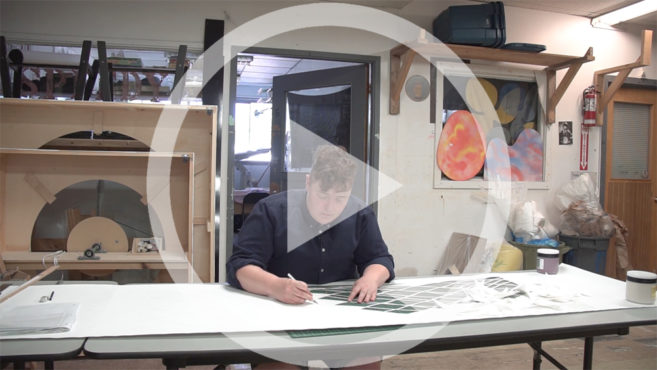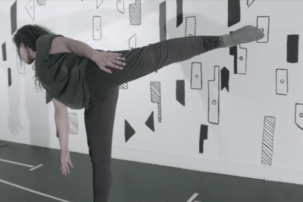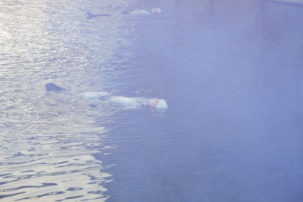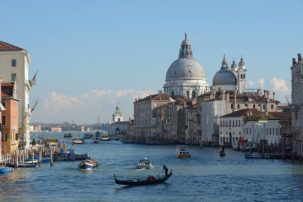In advance of the inaugural Toronto Biennial this fall, Canadian Art is publishing a weekly series of behind-the-scenes features from artists, curators and participants in which they discuss the research and processes that inform their practices.
But what shall I tell you of migrations
when in this empty sky
the precise ghosts of departed summer birds
still trace old signs
—Leonard Cohen, “The Sparrows”
It was a spring without voices. On the mornings that had once throbbed with the dawn chorus of robins, catbirds, doves, jays, wrens, and scores of other bird voices there was now no sound; only silence lay over the fields and woods and marsh.
—Rachel Carson, Silent Spring
At five a.m. the robins start singing. Or is it earlier? I’ve taken to sleeping on the daybed in the studio and I’m never sure if it is the light coming through the windows or the sound of the birds that wakes me. I get up, walk to the glass doors and open them onto the lake. That early the water is flat glass; later it will show the marks and scars of the day’s weather—hot, surely, likely a thunderstorm in the afternoon. The lake itself is a score for the action of the atmosphere.
Blackbirds now, a softer melody than their usual rusted hinge. Then the quick runs of the sparrows, and the single-needle notes of the flycatchers. Later, after breakfast sometimes, the hawks silence the chorus with their sore-throat warning, muscular shadows dipping down below the bluff’s edge, the dawn chorus sung for another day.
Canadian landscape painter Doris McCarthy built her home, Fool’s Paradise, at the edge of the Scarborough Bluffs overlooking the lake. She left the house and property as a retreat for artists after witnessing the restorative powers it had on her guests. I am living in the cottage this summer, moving through her rooms, following the paths she took through the house, fitting my hands into the grooves worn in the handles for the drawers and cupboards she built.
Coal mining is a dangerous job. Buildups of carbon monoxide and other toxic gasses underground can suffocate miners and cause deadly explosions. Before digital sensors that warned of the presence of toxic gasses, coal miners would carry caged canaries. Canaries are a sentinel species, which means that they are more sensitive to the presence of toxins than other animals. If a miner’s canary stopped chirping and died, the miner knew it was time to evacuate the mine.
There has been more than a 50 per cent decrease in songbird populations since the Second World War. Many bird populations are reliant on insect populations, which have also decreased just as quickly. Bird populations are also sensitive to changes in climate, which shift migration patterns and contribute to the loss of viable habitats.
Fifty years ago, McCarthy’s chorus would have been much louder. As our climate changes, as suitable habitat becomes less and less available, as insect populations drop due to water contamination, the dawn chorus is fading out of our sonic environment.
Lake Ontario sustains the life of thousands of birds who live in, on, around and above it. As you near the water’s edge, birdsong fills the air, melodies scoring the viability of the water to sustain life. As weather patterns shift and intensify, and as the environment synthesizes more and more toxins, the lake becomes a score for these changes, and, in turn, the birds become a score for the lake. These small sentinels singing the viability of life on the planet, a score for our own survival. McCarthy recorded the birds she saw in her diaries, small notations on the edges of pages, counting which species found their way to the edge of Lake Ontario. Years later I squint at her feathery handwriting, tracing the changes in the environment through the birds she heard and saw, flashing through the ravine and over the lake.
A score is a notation of action that has occurred in the past, and an invocation of action in the future. A score notates a lacuna, a lossy space of translation between action and its description. A score spans the lacuna, pointing backwards to what has happened in the past, and forwards, to a future interpretation. The scores of these birds record their presence. They invoke the losses of their past, and the potential losses in the future. In this way, a score is both destructive and generative, allowing us to hear what is (not yet) lost.
In the evening, once the heat of the day has cleared, I sit out on McCarthy’s front deck, listening to the birds fading out of the sonic landscape as the sun sets, a secular Evensong: cardinals softening their alarm to a gentler whistle, the shimmering thrushes calling deep in the woods, the mourning doves sounding a low, sustained note, until silence lies over the woods, the fields and the marsh.
The passenger pigeon was once so common that flocks of them as passing were described as clouds obstructing the sun. The noise they made was apparently unbelievable, from harsh clucks to gentle melodies.
The last known passenger pigeon, Martha, died in captivity in 1914. There are no known recordings of her song, nor of any of her species. American scientist Wallace Craig was passionate about the passenger pigeon and notated their calls as best he could, recognizing that this sound would be lost to future ears. I pick these melodies out on the piano, trying to hear what they sounded like. Now huge auditory libraries of birdsong exist, but our most reliable method of capturing this data is via spectrogram, sound-image technology developed during the Second World War.
The extinction of the passenger pigeon has been called a blitzkrieg, a lightning attack on the species by the inflow of European settlers to North America. By the 1890s, passenger pigeons had more or less vanished from the environment, their thunderous calls fading out while the sound of the industrial revolution faded in.
Spectrograms are an analysis of the frequency, intensity and duration of a sound, notated through Rorschach-like blobs of colour. This is currently the most scientific way to record and study vocalizations, and is commonly used to recognize and analyze birdsong. If we are losing birdsong in our sonic environment, can we play these spectrograms as scores to hear the songs we have lost?
I trace the spectrograms of the birds I hear now onto music staffs—a score for 2018—imagining a future when birdsong can only be heard through an abstracted musical translation, musicians sounding disjointed melodies as anthropogenic ritual. I trace over and over these old signs until I can no longer see them, the score breaking down into a sparse echo, sounding out what can no longer be heard.

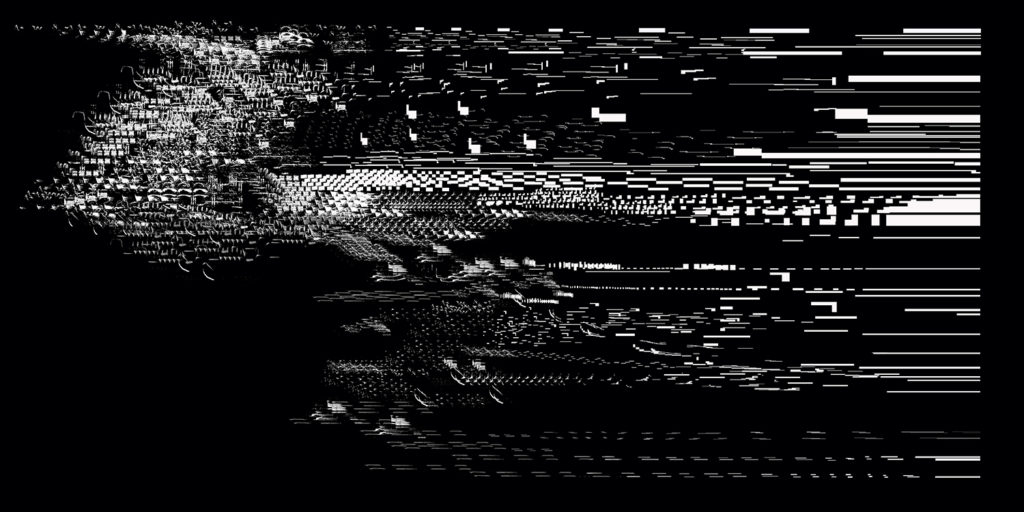 Lou Sheppard, Dawn Chorus/Evensong, 2018.
Lou Sheppard, Dawn Chorus/Evensong, 2018.
